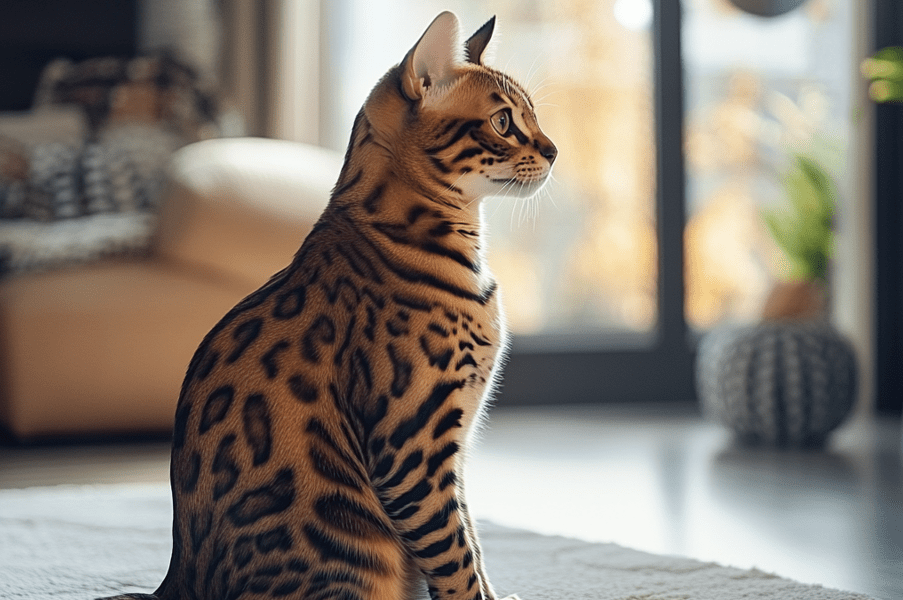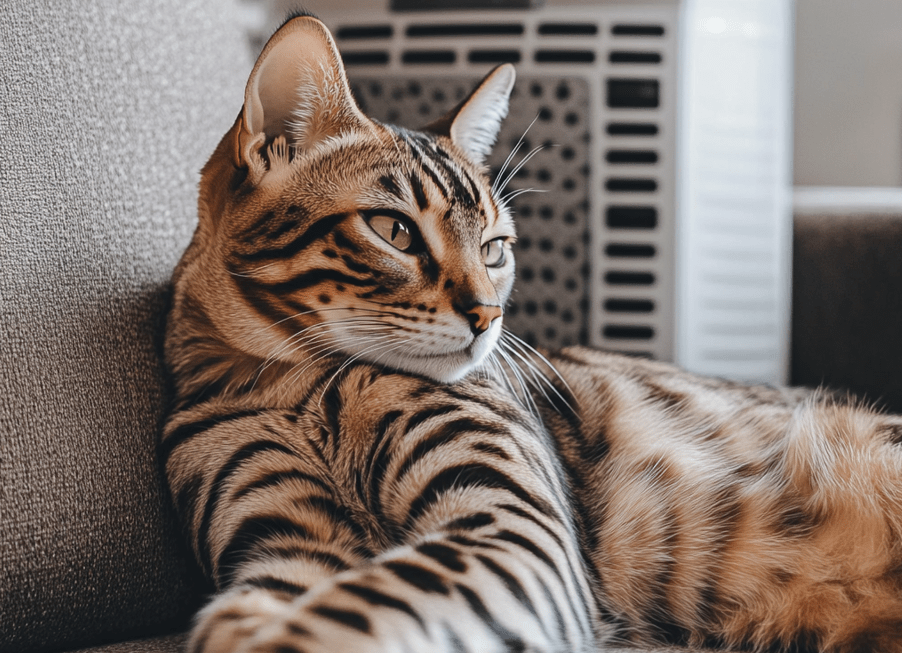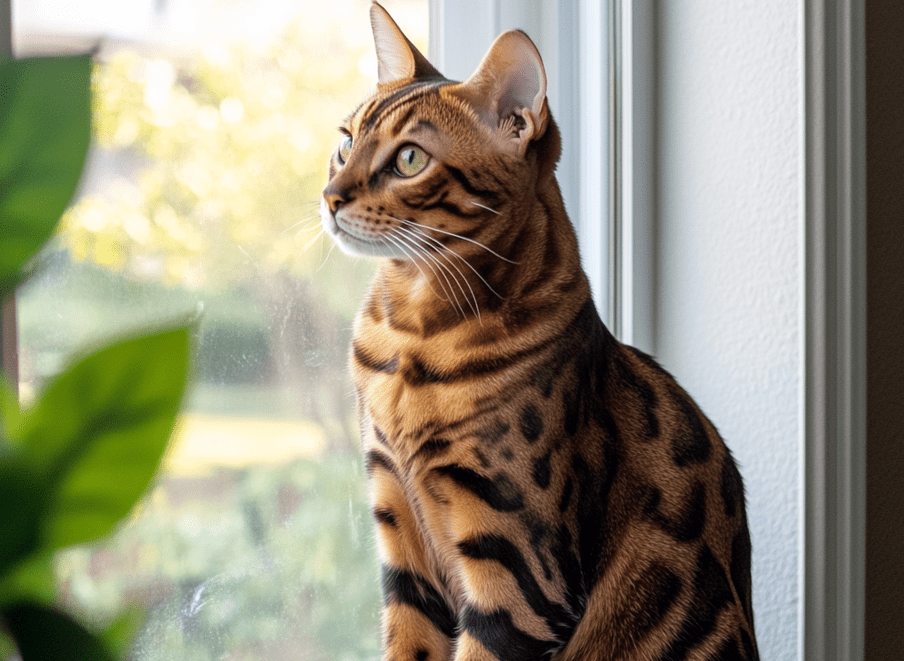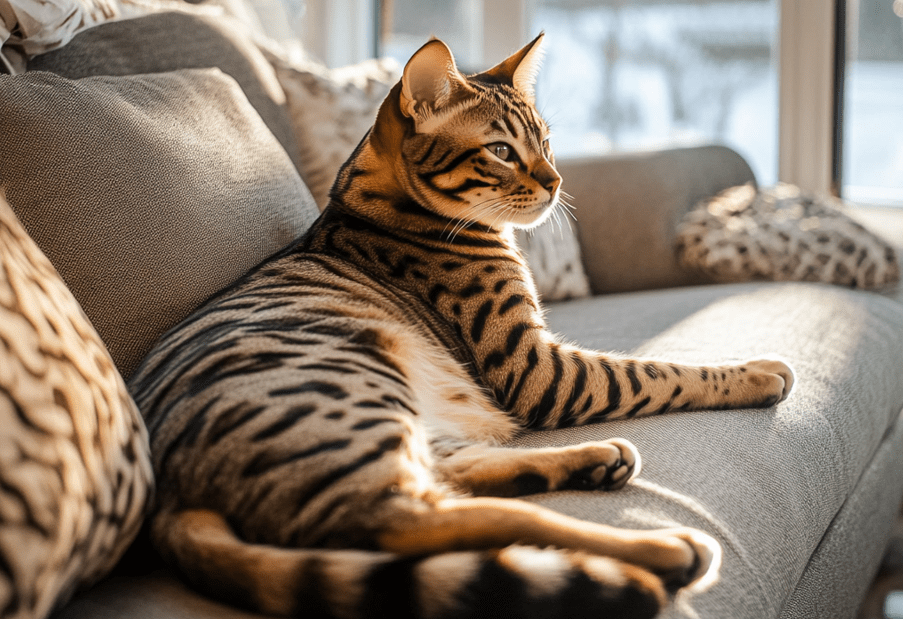
Bengal cats are stunning, energetic, and intelligent companions, but their high energy and curious nature can sometimes lead to destructive behavior in Bengal cats. From scratching furniture to knocking over household items, these behaviors can frustrate even the most devoted pet owners. Understanding the root causes and implementing effective strategies can help tame these tendencies, fostering a harmonious environment for both you and your Bengal. This comprehensive guide explores why Bengal cats exhibit destructive behaviors, how to address them, and practical tips to redirect their energy into positive outlets.
Understanding Destructive Behavior in Bengal Cats
Bengal cats are a unique breed, known for their wild ancestry and vibrant personalities. Their behaviors often stem from their high intelligence, boundless energy, and natural instincts. To effectively manage destructive behavior, it’s essential to understand what drives it.
Why Do Bengal Cats Exhibit Destructive Behavior?
High Energy Levels: Bengals are an active breed with energy to spare. Without sufficient stimulation, they may resort to destructive activities like scratching or chewing to burn off energy.
Boredom and Lack of Mental Stimulation: These intelligent cats crave mental challenges. Without engaging activities, they may turn to mischief, such as knocking items off shelves.
Territorial Instincts: Bengals are territorial by nature. Scratching furniture or walls can be a way to mark their space.
Hunting Instincts: Their wild ancestry makes Bengals natural hunters. In the absence of prey, they may “hunt” household items, leading to destructive play.
Stress or Anxiety: Changes in routine, new environments, or lack of attention can cause stress, prompting behaviors like excessive scratching or chewing.
Improper Training or Socialization: Without early training, Bengals may not learn appropriate boundaries, leading to unwanted behaviors.
By identifying the cause of your Bengal’s destructive tendencies, you can tailor solutions to their specific needs, creating a happier and healthier environment.
Common Destructive Behaviors in Bengal Cats
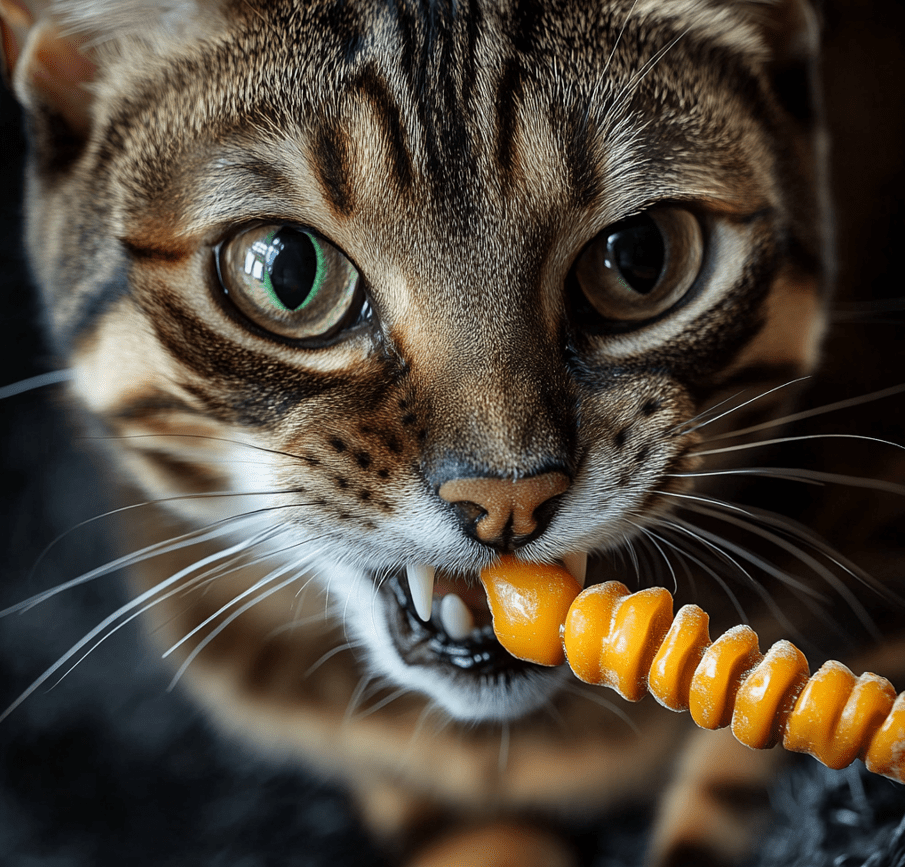
Before diving into solutions, let’s explore the most common destructive behaviors Bengal cats exhibit:
Scratching Furniture: Bengals may claw sofas, chairs, or curtains to mark territory or sharpen their claws.
Chewing Objects: From cords to household plants, Bengals may chew on inappropriate items due to boredom or teething.
Knocking Items Over: Their curiosity and playful nature can lead to knocking over decor, glasses, or other objects.
Excessive Vocalization: While not always destructive, loud or persistent meowing can accompany other disruptive behaviors.
Digging in Potted Plants: Bengals may dig in soil or knock over plants, driven by their exploratory instincts.
Aggressive Play: Rough play, such as biting or scratching during interactions, can become problematic if not addressed.
Recognizing these behaviors is the first step toward redirecting your Bengal’s energy into more constructive activities.
Practical Tips to Tame Destructive Behavior
Addressing destructive behavior in Bengal cats requires a combination of environmental enrichment, training, and understanding their unique needs. Below are actionable strategies to help you manage and prevent these behaviors.
1. Provide Ample Physical Exercise
Bengals thrive on physical activity, and a lack of exercise can lead to pent-up energy that manifests as destructive behavior. Aim to engage your Bengal in at least 30–60 minutes of active play daily.
Interactive Toys: Use feather wands, laser pointers, or ball toys to mimic hunting scenarios. Rotate toys regularly to keep your cat engaged.
Cat Wheels: A cat exercise wheel can be a fantastic outlet for a Bengal’s energy, allowing them to run at their own pace.
Outdoor Adventures: If safe, consider leash training your Bengal for supervised outdoor walks. A harness and leash allow them to explore while keeping them secure.
2. Enrich Their Environment
A stimulating environment is crucial for keeping a Bengal mentally engaged and preventing boredom-related destruction.
Scratching Posts and Pads: Provide multiple scratching surfaces in various textures (sisal, cardboard, carpet). Place them in high-traffic areas where your cat spends time.
Cat Trees and Perches: Bengals love to climb and survey their territory. Invest in a sturdy cat tree or install wall-mounted shelves for vertical exploration.
Puzzle Feeders: Use food-dispensing toys or puzzle feeders to challenge your Bengal’s problem-solving skills during mealtimes.
Hiding Spots: Create cozy hiding spots with cat tunnels or boxes to satisfy their instinct to stalk and pounce.
3. Redirect Scratching Behavior
Scratching is a natural behavior for cats, but it can become destructive when directed at furniture. Redirecting this instinct is key.
Offer Attractive Alternatives: Place scratching posts near furniture your cat targets. Sprinkle catnip or attach toys to make the post more appealing.
Use Deterrents: Apply double-sided tape or citrus-scented sprays to furniture to discourage scratching. Bengals often dislike sticky or strong-smelling surfaces.
Trim Nails Regularly: Keep your Bengal’s claws trimmed to minimize damage. Use cat-specific nail clippers and reward them with treats for cooperation.
Positive Reinforcement: Reward your cat with treats or praise when they use the scratching post instead of furniture.
4. Address Chewing and Destructive Play
Chewing on cords, plants, or household items can be dangerous and destructive. Take proactive steps to curb this behavior.

Provide Safe Chew Toys: Offer cat-safe chew toys designed for dental health. Look for toys made of rubber or fabric that satisfy their chewing instinct.
Secure Hazardous Items: Use cord covers or bitter-tasting sprays to protect electrical cords. Remove or relocate toxic plants out of reach.
Engage in Play: Redirect chewing into playtime with toys that mimic prey, such as stuffed mice or crinkle balls.
5. Minimize Stress and Anxiety
Stress can exacerbate destructive behaviors, so creating a calm environment is essential.
Maintain a Routine: Bengals thrive on consistency. Feed, play, and interact with your cat at similar times each day.
Provide Safe Spaces: Ensure your Bengal has a quiet area to retreat to, especially during loud events or household changes.
Use Calming Aids: Consider pheromone diffusers (like Feliway) or calming treats to reduce anxiety in stressful situations.
Monitor Household Changes: Introduce new pets, people, or furniture gradually to avoid overwhelming your Bengal.
6. Train with Positive Reinforcement
Training your Bengal to follow rules can significantly reduce destructive behaviors. Their intelligence makes them highly trainable.
Teach Commands: Use clicker training to teach commands like “sit” or “leave it.” Reward compliance with treats or playtime.
Discourage Unwanted Behaviors: If your cat jumps on counters or scratches furniture, interrupt the behavior with a gentle noise (e.g., clapping) and redirect them to an appropriate activity.
Be Consistent: Ensure all household members enforce the same rules to avoid confusing your Bengal.
7. Social Interaction and Attention
Bengals are social cats that crave interaction with their owners. Lack of attention can lead to destructive behavior as a way to seek notice.
Spend Quality Time: Dedicate time each day to play, cuddle, or train your Bengal. Even short, focused sessions can make a difference.
Consider a Companion: If your Bengal is alone for long periods, a second cat or pet may provide companionship, provided introductions are gradual.
8. Consult a Veterinarian
If destructive behaviors persist despite your efforts, consult a veterinarian to rule out underlying health issues.
Medical Causes: Pain, dental issues, or neurological conditions can lead to unusual behaviors like excessive chewing or aggression.
Spaying/Neutering: Unaltered cats may exhibit territorial or aggressive behaviors. Spaying or neutering can reduce these tendencies.
Behavioral Specialists: A vet may recommend a feline behaviorist for tailored advice on severe or persistent issues.
Preventing Destructive Behavior in the Long Term
Preventing destructive behavior requires ongoing effort and a proactive approach. Here are long-term strategies to ensure your Bengal remains well-behaved:

Early Socialization: Expose kittens to various people, environments, and stimuli to build confidence and reduce anxiety-driven behaviors.
Consistent Training: Reinforce good behaviors throughout your cat’s life to maintain boundaries.
Regular Playtime: As Bengals age, their energy levels may decrease, but they still need regular exercise to stay happy.
Adapt to Changes: Be prepared to adjust your strategies as your Bengal’s needs evolve, such as during adolescence or senior years.
Myths About Destructive Behavior in Bengal Cats
Misconceptions about Bengals can lead to ineffective solutions. Let’s debunk some common myths:
Myth: Bengals Are Naturally Destructive: While energetic, Bengals aren’t inherently destructive. Proper care and stimulation can prevent unwanted behaviors.
Myth: Punishment Stops Bad Behavior: Harsh punishment can increase stress and worsen behaviors. Positive reinforcement is far more effective.
Myth: Bengals Can’t Be Trained: Bengals are highly intelligent and respond well to consistent training techniques.
When to Seek Professional Help
If your Bengal’s destructive behavior escalates or becomes unmanageable, professional help may be necessary.
Certified Feline Behaviorists: These experts can assess your cat’s environment and behavior to create a customized plan.
Veterinary Behaviorists: For complex cases involving medical and behavioral issues, a veterinary behaviorist can provide comprehensive care.
Training Classes: Some areas offer feline training programs that teach owners how to manage high-energy breeds like Bengals.
Conclusion
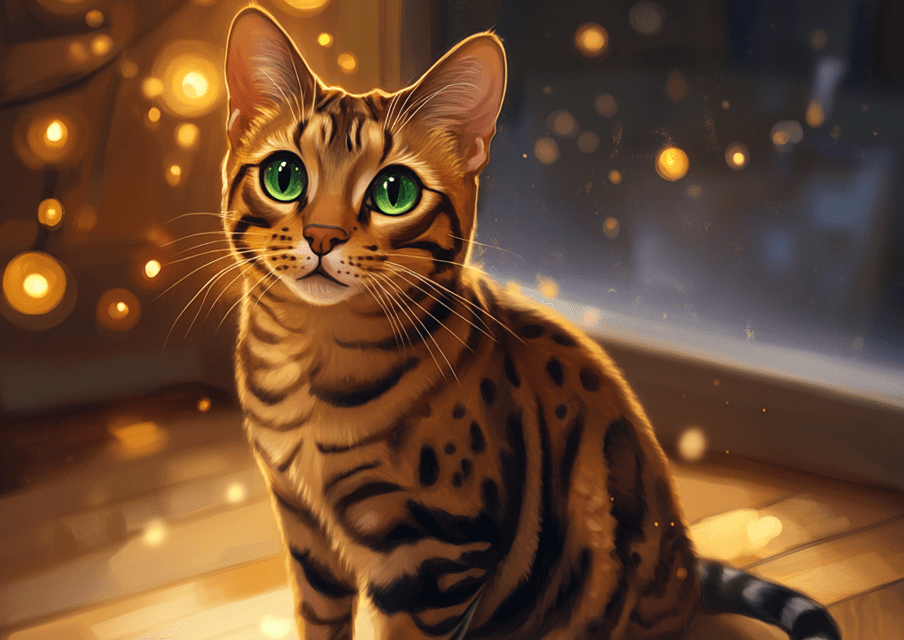
Destructive behavior in Bengal cats can be challenging, but with the right approach, it’s entirely manageable. By understanding your Bengal’s unique needs, providing ample physical and mental stimulation, and using positive reinforcement, you can redirect their energy into positive behaviors. Creating a stimulating environment, maintaining consistency, and addressing any underlying issues will help you build a strong, trusting bond with your Bengal. With patience and dedication, you can transform your home into a peaceful sanctuary where your Bengal thrives.
Start implementing these practical tips today, and watch your Bengal’s destructive tendencies fade as they embrace their playful, intelligent, and loving nature.

